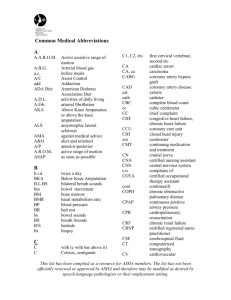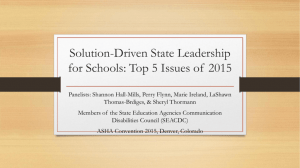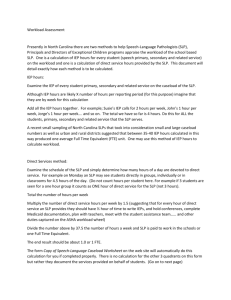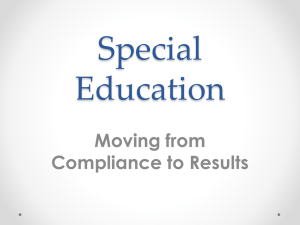3:1 Service Delivery Model - Knox-Warren Special Education District
advertisement
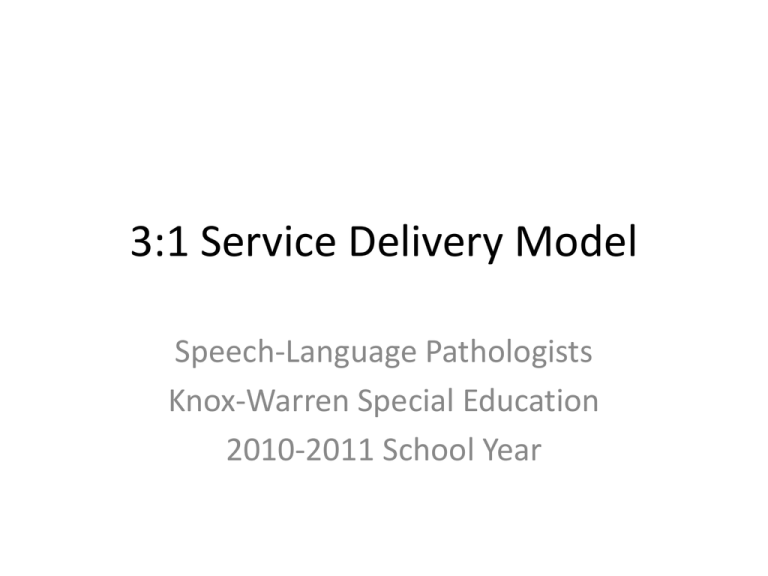
3:1 Service Delivery Model Speech-Language Pathologists Knox-Warren Special Education 2010-2011 School Year What is the 3:1 Service Delivery Model? • The model follows a calendar in which speech pathologists provide traditional, direct service to students for 3 consecutive weeks, followed by a week of consultative services. • The consultative week is an opportunity for the SLPs to consult with teachers, parents, other specialists, in addition to other workload related tasks. • The primary goal is to help align speech and language services with the student’s curriculum and general education teacher’s classroom objectives so that generalization of skills occur. In other words therapy objectives are better aligned with classroom curriculum. Why Change? • This model is the kind of new approach that ASHA (American Speech and Hearing Association) has been officially advocating since the 2002 adoption of its policy on “Workload Analysis Approach for Establishing Speech-Language Caseload Standards in the Schools”. (See attached Workload Activity Clusters) • This service delivery approach also meets the demands of the reauthorized Individuals with Disabilities Education Act, (IDEA Amendments, 1997) to focus on functional IEP goals to support the student’s progress in the general curriculum. Why Change cont. • Quality consultation with teachers could not be done under the previous model of managing all aspects of workload, without specific support time. • It improves the quality of service without increasing costs. • It will provide the structure to formally discuss student needs, progress and strategies with teachers, parents and other related staff. Service Delivery Options Direct Services • • • • • • Screening students Continued direct speech/language service Student evaluations Co-teaching in classroom Direct instruction in classroom (push in) RtI interventions Service Delivery Options Indirect Services to Support LRE • Consultation with teachers, paraprofessionals, parents, other related service staff • Design pre-referral intervention activities • Design adaptations, modifications to curriculum • Observation of students in classroom setting • Develop materials for use in classroom setting Service Delivery Options • Indirect Services to Support IEP • • • • • • Align IEP goals with general ed curriculum Develop materials for student use Programming augmentative devices Student observation in classroom setting Staff development training Analyze and engineer environment to increase opportunities for communication Service Delivery Options Compliance and Must-Do’s • Participate in special ed meetings (IEPs) • Participate in general ed meetings (RtI) • Paperwork completion (IEP, RtI, data collection, daily logs) • 3rd party billing documentation/paperwork • Funding report for Assistive Tech/Augmentative devices Information Sharing • Informing Administrators/Staff: (Attached letter to administrators) • Informing Parents: (Attached letter to parents) • Calendar of Service: (Proposed Calendar of Service Attached) Data Collection Consultation Week Data collected on services provided: • Direct therapy • Direct therapy in general ed • Parent contacts • Teacher consultation • Consultation with other specialists • Material development • Make up sessions • Completed paper work • Medicaid billing • Participated in IEP meetings • Participated in RTI meetings • Participated in small group workshop/instruction References • American Speech-Language-Hearing Association, (2000) Guidelines for the Roles and Responsibilities of School-Based Speech-Language Pathologists. Rockville, MD: Author • Annett, M. (2003, April-June) Beyond School Caseloads; Looking at Total Workload. The ASHA Leader, pp. 1, 17-18 • Annett, M. (2004, March 2) Service Delivery Success: SLPs in Oregon Schools Tackle Workload, Enhance Recruitment. The ASHA Leader, pp. 1, 12-13. • Cirrin, F.M. Advocating for Workload Strategies: The Minnesota Story. The ASHA Leader, pp. 1, 18-20. • Throneburg, Calvert, Sturm, Paramboukas and Paul, A Comparison of Service Delivery Models: Effects on Curricular Vocabulary Skills in the School Setting, American Journal of Speech Language Pathology, - 2/2009, Vol 9, 10-20.
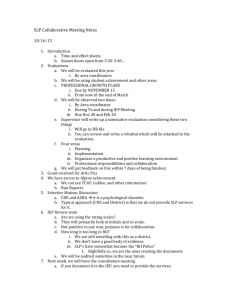

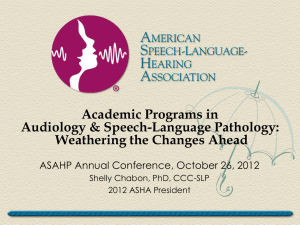


![Guidelines for Academic Workload Allocation[1]](http://s3.studylib.net/store/data/007357775_1-c08378375a61bf04d5de327b7ce434b5-300x300.png)

